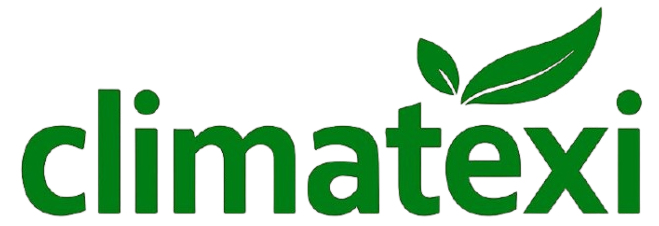Patient Warming System Market Analysis: Trends and Opportunities
The global Patient Warming System Market analysis is witnessing remarkable growth as healthcare facilities prioritize patient safety and temperature management. Increasing surgical procedures, coupled with rising awareness of hypothermia prevention, are driving the demand for advanced patient warming systems. Hospitals and surgical centers are adopting innovative solutions such as forced-air warming devices, electric blankets, and fluid warmers to enhance patient outcomes. Technological advancements and integration with digital monitoring systems are further boosting market adoption, ensuring precise temperature regulation during critical procedures.
Get Full Reports :https://www.marketresearchfuture.com/reports/patient-warming-system-market-39488
Regional insights indicate that North America and Europe lead the Patient Warming System Market analysis, owing to well-established healthcare infrastructure and growing investments in surgical technologies. Meanwhile, Asia-Pacific is emerging as a lucrative market due to increasing healthcare expenditures, rising surgical procedures, and a growing geriatric population. Market participants are focusing on collaborations, product innovations, and strategic expansions to strengthen their position.
FAQ:
Q1: What are the key drivers of the Patient Warming System Market?
A1: Increasing surgical procedures, rising awareness of hypothermia prevention, and technological advancements are major drivers.
Q2: Which regions show the highest growth in this market?
A2: North America and Europe lead in adoption, while Asia-Pacific shows significant growth potential.
Q3: What types of patient warming systems are available?
A3: Common types include forced-air warming devices, electric blankets, and fluid warmers.
Hyperlink: Patient Warming System Market analysis
The global Patient Warming System Market analysis is witnessing remarkable growth as healthcare facilities prioritize patient safety and temperature management. Increasing surgical procedures, coupled with rising awareness of hypothermia prevention, are driving the demand for advanced patient warming systems. Hospitals and surgical centers are adopting innovative solutions such as forced-air warming devices, electric blankets, and fluid warmers to enhance patient outcomes. Technological advancements and integration with digital monitoring systems are further boosting market adoption, ensuring precise temperature regulation during critical procedures.
Get Full Reports :https://www.marketresearchfuture.com/reports/patient-warming-system-market-39488
Regional insights indicate that North America and Europe lead the Patient Warming System Market analysis, owing to well-established healthcare infrastructure and growing investments in surgical technologies. Meanwhile, Asia-Pacific is emerging as a lucrative market due to increasing healthcare expenditures, rising surgical procedures, and a growing geriatric population. Market participants are focusing on collaborations, product innovations, and strategic expansions to strengthen their position.
FAQ:
Q1: What are the key drivers of the Patient Warming System Market?
A1: Increasing surgical procedures, rising awareness of hypothermia prevention, and technological advancements are major drivers.
Q2: Which regions show the highest growth in this market?
A2: North America and Europe lead in adoption, while Asia-Pacific shows significant growth potential.
Q3: What types of patient warming systems are available?
A3: Common types include forced-air warming devices, electric blankets, and fluid warmers.
Hyperlink: Patient Warming System Market analysis
Patient Warming System Market Analysis: Trends and Opportunities
The global Patient Warming System Market analysis is witnessing remarkable growth as healthcare facilities prioritize patient safety and temperature management. Increasing surgical procedures, coupled with rising awareness of hypothermia prevention, are driving the demand for advanced patient warming systems. Hospitals and surgical centers are adopting innovative solutions such as forced-air warming devices, electric blankets, and fluid warmers to enhance patient outcomes. Technological advancements and integration with digital monitoring systems are further boosting market adoption, ensuring precise temperature regulation during critical procedures.
Get Full Reports :https://www.marketresearchfuture.com/reports/patient-warming-system-market-39488
Regional insights indicate that North America and Europe lead the Patient Warming System Market analysis, owing to well-established healthcare infrastructure and growing investments in surgical technologies. Meanwhile, Asia-Pacific is emerging as a lucrative market due to increasing healthcare expenditures, rising surgical procedures, and a growing geriatric population. Market participants are focusing on collaborations, product innovations, and strategic expansions to strengthen their position.
FAQ:
Q1: What are the key drivers of the Patient Warming System Market?
A1: Increasing surgical procedures, rising awareness of hypothermia prevention, and technological advancements are major drivers.
Q2: Which regions show the highest growth in this market?
A2: North America and Europe lead in adoption, while Asia-Pacific shows significant growth potential.
Q3: What types of patient warming systems are available?
A3: Common types include forced-air warming devices, electric blankets, and fluid warmers.
Hyperlink: Patient Warming System Market analysis
0 Commenti
·0 condivisioni
·338 Views
·0 Anteprima



